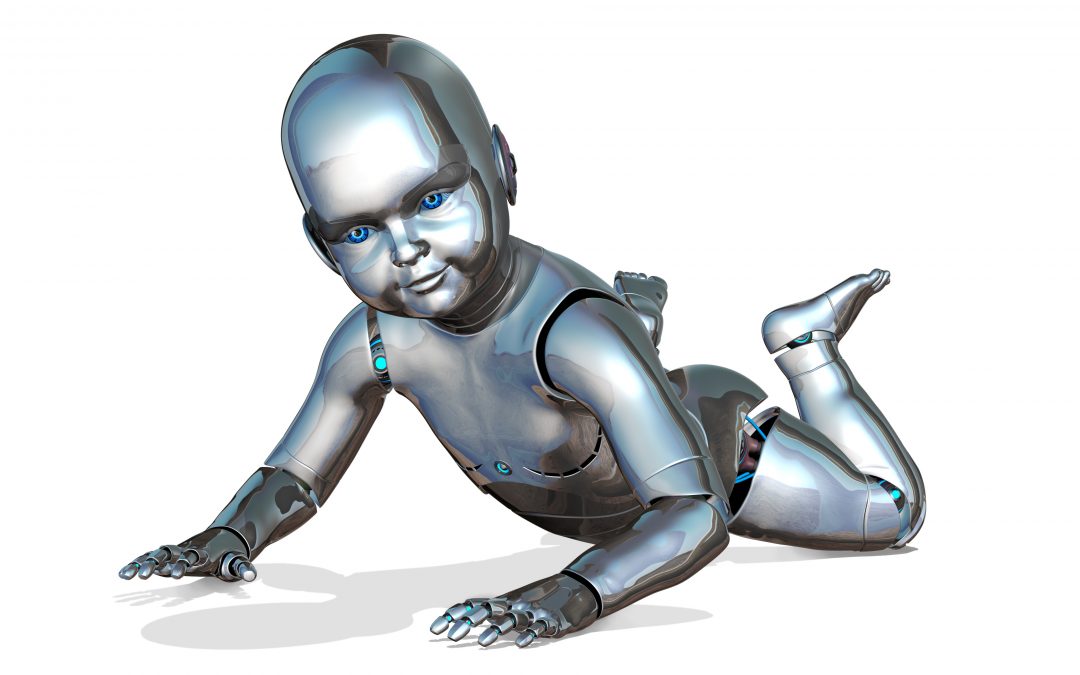We found KPMG’s article “The robots have arrived. Are you ready?” to be a very good overview of the onset of intelligent software in InsurTech (technology in the insurance industry). But we wanted to explore this a bit more in this blog post.
The Intelligent Software Gradient
Let’s explore the gradient of “intelligent software”. The KPMG article first touches on Robotic Process Automation (RPA). This is likely the most innocuous of software in the class. You may work with a management consultant or perhaps an internal team to map out and apply “lean” techniques to your business processes. Once those business processes are optimised for efficiency, they need a place to “run”. Our DECK DecisionWare product is able to take the output from your business process mapping/optimisation efforts as input (typically in a mapping language called BPMN 2.0), and suddenly the software is aware of all of your processes. It provides automation of the processes: triggering the start of a process when an analytics routine finds something interesting in your data (e.g. a new claim item from an insured customer throws the master claim into the category of a “major case claim”, and all of the claims lines and other relevant information is gather into a “case file” and a manager from the pool is assigned to the case), or it could move the process from one step to the next (a signed document received in the mail triggers a policy renewal agent to finalize the policy renewal).
All sorts of efficiencies are found with this type of automation. Algorithms are able to hunt for situations in data that are difficult for humans to spot, and bring it to the attention of an employee.
The other side of the gradient is what the KPMG article introduces as “cognitive computing” or cognitive software. This is where software is able to make decisions and act on its own out in the wild. Given enough testing and bounded inputs, this isn’t nearly as scary as it sounds in some ways. Think of Google’s self-driving cars and all of the miles they’ve driven in an assisted fashion before they’ve been allowed out on their own. While driving is seemingly a difficult task, there are a constrained number of normal situations that can be accounted for in software; and when “abnormal” arises, the vehicle pulls over to the side of the road and looks for human help.
We get into trouble with cognitive software in situations where the inputs are not logical, and the software hasn’t been trained to “pull over to the side” and ask for grownup supervision. I’m thinking here of things like the “Flash Crash of 2:45” in 2010 where high-frequency trading software acted on its own and caused the markets to drop a trillion dollars, and then regain most of that value in the span of 30 minutes.
We all know that cognitive software on this side of the gradient is coming. Companies are employing internal and 3rd party data scientists to give them a business advantage by using their historical data for models of how to quickly respond to emerging situations that can be advantageous (or needing mitigation) to the business.
Learning to Walk with DECK DecisionWare
With DECK DecisionWare, we’ve approached this new way of thinking in two different ways. The first is in realising that DECK DecisionWare brings together all of the data in a customer’s ecosystem, making it the perfect place for the data scientists to do their work. To this end, we’ve provided a scripting portal inside of DECK that allows data scientist to write algorithms in R, Python, JavaScript and/or Groovy. A blog post on this can be found here.
The second thing we’ve done inside of DECK is to provide a mechanism to allow for human oversight as these software algorithms become more, shall we say… ambitious. This is a part of what our Dynamic Case Management (DCM) framework is all about. A blog post on DCM will be coming shortly, but briefly here: DECK’s DCM is a way that an algorithm can find something it is hunting for in the data, and then automatically build a “case file” for it. A case file is a container that wraps together all of the bits of related information. Cognitive algorithms can even drop their recommendations into the case file where a human can become aware of the emerging situation and be the final check-and-balance for important decisions. Our DCM module is much more than that – for example, a human account manager working on a particularly difficult policy renewal can start a DCM case file, linking documents, data, tasks and other information, and then perhaps invite a more senior account manager in an office on the other side of the globe to consult on the renewal; the case file remaining after the work is done as an audit trail for why particular decisions were made.
The DCM case file mechanism inside of DECK DecisionWare gives human oversight capability for early adopters of cognitive software and allows a management team a level of comfort that they’re not going to have a software bot run amuck while it is learning to walk. More autonomy can be given to the algorithms after they mature and have proven themselves.

